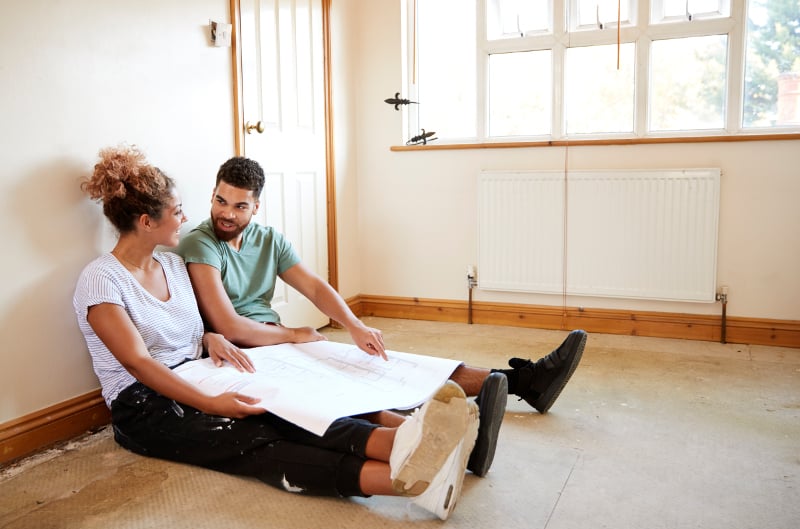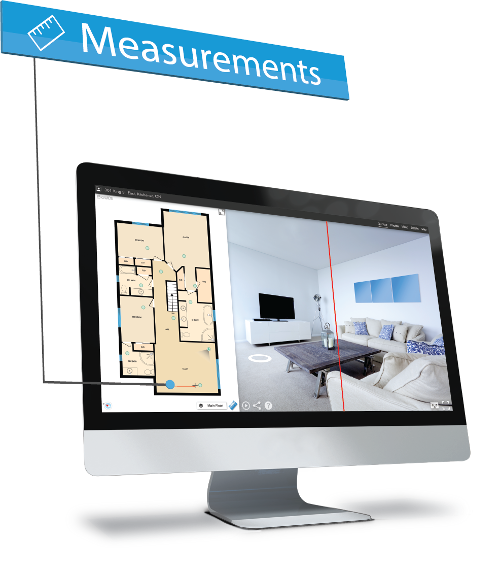
Avoid liability and be sure of the size of the home you’re buying or selling
 Buyers care about the square footage of their potential home more than almost any other metric. However, there are no mandated measurement standards for single dwelling homes in almost any province or state. How can a buyer or seller be confident that their home’s measurement is accurate?
Buyers care about the square footage of their potential home more than almost any other metric. However, there are no mandated measurement standards for single dwelling homes in almost any province or state. How can a buyer or seller be confident that their home’s measurement is accurate?
Kevin Klages, CEO of Planitar, argues this uncertainty can create problems for everyone. “When there is no ‘standard,’ then buyers won’t know if the presented measurements include balconies, decks and other spaces that other agents may not include in other listings,” he explained. “This creates major problems for the industry.”
Professional and ethical real estate professionals need to be sure that their measurements are consistent. Buyers want to know how large a home is, and providing that information helps you attract them. However, listing an incorrect measurement may open you up to liability. Many real estate agents rely on measurements from other sources, such as tax records, sellers, builders, or assessors. How do you ensure that those numbers are accurate?
1. Hire a Professional
Chances are, a number provided from a homeowner, builder, or assessor is not what your buyers are looking for. They want to know a home’s gross living area (GLA), which is a measurement of the space inside the home. Most measurements you’ll be provided with are exterior measurements that may even include the garage and basement.
Adam Fingret, CEO of Extreme Measures, recommends that as a real estate agent, it’s best to hire a professional to get consistent measurements that are in-line with the expectations of the buyers in your area.
“If I was a broker, I would insist that I, my firm, and the other professionals I deal with are armed with whatever local practices and information is available with respect to floor area measurement,” he said.
The advent of laser measurement technology has made measurement companies more popular and affordable than ever.
Consider the iGUIDE, a tool that makes virtual 3D tours of a home, detailed floor plans, and produces highly accurate measurements at the same time. A quick walk through with the machine, and you have a reliable measurement that is consistent from home to home.
Prospective homeowners may be less willing to engage a professional measurement company to measure every home they consider. However, if square footage is important to you, and may change what you consider offering on a home, verifying with a professional is the best way to protect yourself.
Ron Usher, a B.C. lawyer and notary who specializes in real estate, told Zolo that homeowners and prospective condo buyers should get a professional measurement.
He said, “With any aspect of a real estate purchase, if there’s something that is really important to you, then you need to get it verified by a professional.”
2. Know the Basics and Ask What Measurements Are Included
 A home’s square footage isn’t the whole picture. Without a measurement standard, you can’t be sure what that measurement includes and excludes. What about areas with reduced ceiling height, open areas, or front porches? Don’t assume that a number you’re given only includes the home elements you would include, or that it follows even the most common standard (called the ANSI Home Measurement Standard).
A home’s square footage isn’t the whole picture. Without a measurement standard, you can’t be sure what that measurement includes and excludes. What about areas with reduced ceiling height, open areas, or front porches? Don’t assume that a number you’re given only includes the home elements you would include, or that it follows even the most common standard (called the ANSI Home Measurement Standard).
Instead, ask the real estate agent or current homeowners what is included in the measurement. In particular, ask about the basement, garage, and balcony, which Fingret argues are the most common problem areas.
You also need to watch out for exterior measurements. These include the exterior wall space and often space from garages and patios, which inflates the square footage. For an accurate home measurement, insist on an interior measurement, especially when comparing two houses which, after all, may have dramatically different sized garages.
Klages suggests that real estate agents who are looking to explain the difference between these two measurements showcase images of the home’s floor plan with the measured areas shaded in. That way, homeowners can visually see which spaces you counted, and which you did not.
3. No Measurement Is Perfect
Why is it that you and your agent have come up with slightly different measurements for the same home?
According to Klages, small discrepancies are to be expected. Walls aren’t always 90°, and even professionals well-versed in a measurement standard won’t come up with exactly the same number for the same home. Instead of aiming for perfection, the goal is to get the number as consistent as possible across homes so that buyers can make a realistic comparison between them.
4. Get Your Square Footage in Writing
 Don’t rely on verbal confirmation from whoever is providing you with the measurement to protect you in court. Homeowners should also be aware that the MLS has a disclaimer in most states and provinces indicating that the square footage listed is only approximate. If the square footage of your new home matters to you, it needs to be accounted for in writing.
Don’t rely on verbal confirmation from whoever is providing you with the measurement to protect you in court. Homeowners should also be aware that the MLS has a disclaimer in most states and provinces indicating that the square footage listed is only approximate. If the square footage of your new home matters to you, it needs to be accounted for in writing.
The written purchase agreement isn’t always enough protection. Various states and provinces include different square footage disclaimers in the purchase agreement. Idaho and Mississippi, in particular, place the responsibility on the buyer to verify square footage. Wisconsin and Minnesota’s purchase agreements state the square footage of the home is approximate.
For many in North America, buying a home is the most significant investment they will make. It’s worthwhile to have a real estate lawyer examine your purchase agreement. For real estate agents, professional measurements and the advice of legal professionals can help mitigate your risk, so you can still provide buyers with the square footage measurements they require.
Brought to you by Sara Penny, Communications and Marketing Manager at Planitar Inc. the makers of iGUIDE®. Follow the link for more information on how iGUIDE provides all the listing information your clients demand.
